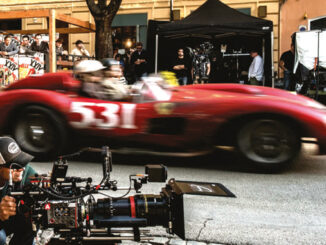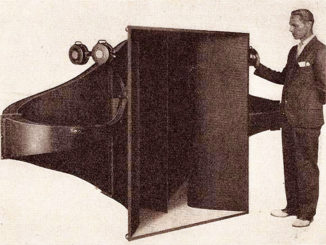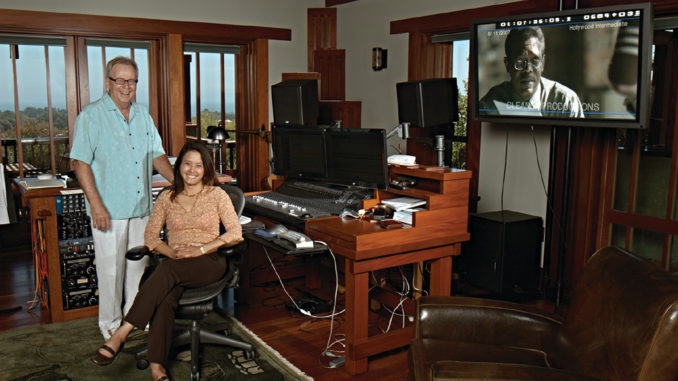
by Michael Kunkes
In 1940, three years after its inception, the Society of Motion Picture Film Editors (SMPFE), the precursor to today’s Editors Guild, admitted Music Editors as an official classification. Previously, music editors were considered part of the sound editors classification––which then included sound effects and music––who joined SMPFE in 1937. Beginning in the mid-1940s, the craft began to grow in sophistication and importance. Today, with 243 members, music editors are one of the Local’s smaller yet most essential, detailed and creative categories. Now, 67 years later, music editors are facing challenges from both inside and out in Hollywood’s changing below-the-line landscape.
Stephanie Lowry, who represents the classification on the Guild’s Board of Directors, is a 2001 Emmy winner for HBO’s 61*, with other credits including Guess Who, Stranger Than Fiction and Rumor Has It. She provides a roadmap to some of the issues being dealt with by the rank and file.
“Productions are increasingly reluctant to bring music editors on early and keep them on until the end of the show,” says Lowry. “Many are completely relying on picture editors to cut temp music, and using Avid outputs to preview instead of doing dub stage temps. Productions are picking and choosing select weeks to have a music editor, and frequent lay-offs in the middle of post are becoming common. Sometimes, sound, music and picture crews are coming together for the first time when they meet on the final dub stage. The creative process suffers greatly from these trends.”
Lowry is a firm believer that filmmaking is a collaborative medium. “A good temp dub is a work of art in its own right, aside from being a critical formative, developmental process––and it is getting bastardized,” she continues. “Picture editors are having to do the work of music editors, sound editors and mixers––and that’s spreading them pretty thin.”
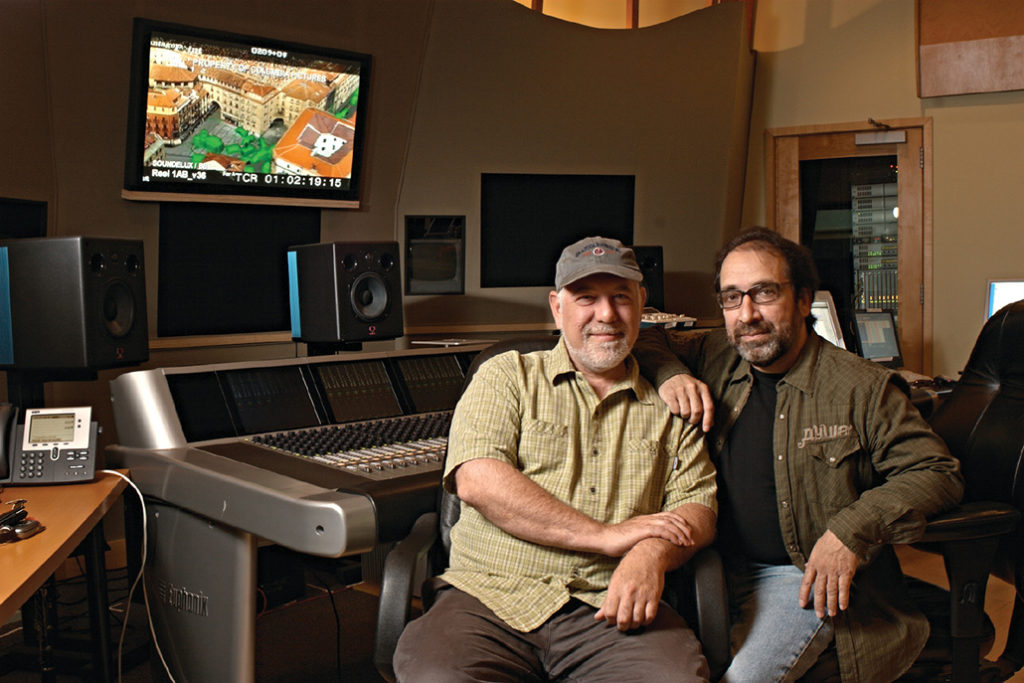
Well Composed
One constant, however, has always been the core dynamic of the composer-music editor relationship. Some music editors establish long working relationships with one composer; others prefer to go with a variety. A great place to start is with Kenny Hall. At 70, he has just received his 50-year card from the Guild and has begun a new career, as an associate professor and holder of the Ken Wannberg Endowed Chair in Music Editing at the USC School of Cinematic Arts.
Hall crafted 87 scores with the late Jerry Goldsmith, from George Cukor’s Justine in 1969, until the composer’s last, Loony Tunes: Back in Action in 2003. “Jerry was the most complex composer who ever lived, with so many odd-metered bars and flip-flop patterns,” recalls Hall. “You had to know precisely how to cue for him. Jerry’s secret was always to write the subtext in a scene. One time, he was scoring a chase scene and the director said, ‘You’re going to write some fast music, right?’ And Jerry said, ‘No, I’m going to write the torment and emotion of the man being chased.’ Wow! I’ve been accused of putting all my eggs in one basket, but it was a most incredible basket.”
Bill Bernstein’s relationship with composer Thomas Newman is one of the best a music editor could want. In the late 1980s, Bernstein, a young editor, was creating (along with Bob Badami and Bernstein’s brother, Richard, also a Guild music editor) a music editing tool called Streamline––which won a 1988 Scientific and Technical Award from the Academy of Motion Picture Arts and Sciences–– when he got together with Newman, then a “B” composer. Since then, they have collaborated on dozens of films, including Road To Perdition, Jarhead, Cinderella Man and The Shawshank Redemption.

“A music editor who hooks up long-term with a composer has more creative influence,” Bernstein claims. “I’m there with Tom when he writes; he’ll play me ideas and sometimes I get to suggest other ways of doing things. Sometimes we’ll improvise together, sample what we’ve done, and that will become the basis of a piece. But mainly, I get to be near the formative stages of a lot of the music, and that’s very exciting.”
For 20 years, Suzana Peric has worked in the more rarified atmosphere of New York, accumulating credits that include such musically rich films as The Fellowship of the Ring, Kundun and The Pianist, and working for composers such as Howard Shore, Rachel Portman, Wojciech Kilar and the great Ennio Morricone. “Each composer works in his or her own way, and one adjusts to whatever that composer needs to organize his or her preparations for writing. But what they look for most of all is someone to provide a continuing relationship with the film and the director. That is the best part of my job––to be able to interact with the core and meaning of the film directly. I always have that as my goal.”
“I don’t think the position of music editor is going to completely go away anytime soon… Composers will always need someone to interface with editorial for them. It’s just a question of who does the work and how integrated they are into the post-production process as a whole.” – Stephanie Lowry
On a side note, Peric feels that New York does offer a different style of working. “I’ve heard stories from the West Coast about instances where a music editor would not stay on the film through the end of the final mix because of scheduling problems––typically, the composer to which the music editor is attached moves on to a new film, and he or she follows,” she explains. “Another music editor would be called in to cover the final mix. If you come in at the end of a film, for which you have not been a part of creating the music, then you have absolutely nothing to contribute creatively. You can be a pair of hands and move a cue left or right, or a frame here and a frame there, but you have no knowledge of how to guide the mixer at the final. That is something I have not experienced in New York, at least not on a regular basis.”
“Today’s music editor is a lot more than just a button pusher or someone who just cuts music into place and makes sure the stage is getting the right time code and sample rate,” Bernstein adds. “Today, the music editor ideally represents the composer all the way through to the final mix, acting as a go-between with the director to protect the integrity of the score.”
According to Badami, directors are not always the best judges of what’s correct musically for their own films. “Yes, it’s the director’s film, but I learned early on that many directors don’t understand music very well,” says Badami, whose career reaches back to 1979’s Boulevard Nights and also includes Pirates of the Caribbean, Black Hawk Down and Mars Attacks. “They are willing to do things that don’t sound musical. The composer has a lonely job; ours is to be the person he can rely on to follow through on his vision and deal with the things that occur after his music is recorded.”
Regarding the role of picture editors and temp music, Hall says, “Picture editors are truly gifted at what they do, and are so close to the director that I feel they sometimes do a disservice to that director in terms of pushing their music preferences prior to giving the ‘temp’ music editor a chance to create another point of view. Composers are constantly being dictated to by temp scores or cues, and this can stop the initial creative process of director/composer collaboration.”
“The temp dub has kind of become the tool by which directors sometimes take over ownership of the score. They will often approve the music for the temp and hold the composer against that.” – Bill Bernstein
Occasionally, a picture editor may overstep his or her bounds and start picking material that may push scenes along, but possibly not in the right direction, according to Hall. “For years, Jerry Goldsmith didn’t want to hear temp music when he saw a picture for the first time, and John Williams said that if he had seen Jaws with a temp score, he never would have come up with his famous ‘da-dum, da-dum’ theme,” he recalls.
Badami doesn’t see a huge problem here. “To me, that is within the realm of an editor’s work. Some are good at it, some are not. Picture editors can be on a film from the first day of shooting, and if they need to put in some music to make things play, they should do it. They have a point of view and are dealing with the project in a much deeper way.”
Temp Love…and Hate
Along with championing the score, the music editor’s most important function is to oversee the creation of the temp dub, which is often, as Lowry claims, a work of brilliance in itself––although that brilliance rarely gets to appear on screen. The temp dub began to appear in the early to mid-1980s as a way of showing a rough work in progress to a director or exhibitor, but rarely to an audience.
In recent years, however, driven by precision audio technology such as ProTools, the emergence of huge music libraries, and shortened post-production schedules, the temp dub has achieved an importance today that can be a do-or-die situation for the composer, the film, or both. It’s a situation that has come to be known as “Temp Love.”
Modern Music’s Ken Karman has been a feature film music editor since 1979. Associated with leading composers such as Newman, Alan Silvestri, James Horner and Danny Elfman, Karman agrees that the purpose of the temp dub hasn’t changed, only the expectations associated with the process. “Directors, producers and studios want to present their films in the best possible light,” he says. “With digital technology, editors are able to refine the temp music in a way that was not possible when I started in the business, and expectations have risen with our ability to do things like changing a cue’s tempo and pitch and to combine disparate pieces of music in a very precise way.”
“Each composer works in his or her own way, and one adjusts to whatever that composer needs to organize his or her preparations for writing. But what they look for most of all is someone to provide a continuing relationship with the film and the director.” – Suzana Peric
Karman calls the temp a double-edged sword. “For better or for worse, temp dubs have become an integral part of modern post-production. While they do allow directors more time to explore various musical directions, they often have the effect of limiting a composer’s opportunity to approach the music with a fresh perspective. It’s not unusual for a composer to find himself in the position of having to compete with his own work from previous films. The process engenders a kind of musical inbreeding.”
While he acknowledges the importance of the temp, Hall does feel that it sometimes serves only to mask a director’s insecurities. “That’s only human nature, but sometimes the overuse of music becomes only a background and adds no emotion, ” he says.
“Music should start for a specific reason, play a point of view or an emotion, and then get the hell out, not drawing the audience’s attention. Music never saved bad acting, and it never saved a bad scene either.”
Michael Dittrick, like his mentor Hall, came out of the studio system, employed at Universal, Fox and Warner Bros. When the studios disbanded their music editorial departments in the mid-1980s, Dittrick first became a contract worker. Then, he started his own company, MICDI Productions, Inc. in 1987, through which he has worked on both TV series (Desperate Housewives, American Family, Boston Public) and features (Elektra, Halloween: Resurrection, The Princess Bride). He feels that temp love is a problem that is only going to get worse.
“It’s become common for music editors to do what they can to blow away the director,” says Dittrick. “They usually have more hands-on time to work closely with the director on a scene than the composer does, and a larger sound palette because they can choose anything in the world from their music libraries without having to clear it.” That’s where the challenges start, he feels.
Along with championing the score, the music editor’s most important function is to oversee the creation of the temp dub, which is often, as Lowry claims, a work of brilliance in itself.
“The producer or director goes into a spotting session with the composer, who will be told, ‘We really love this cue, can you just rip it?’” Dittrick continues. “Technology is going to allow the director and the picture editor to put more music in; in fact, it has come to be expected. It’s not uncommon for us to clean up OMF files from the Avid and take them to the dubbing stage, but it’s also becoming common for the picture editor to turn the music over to the sound department, who loads it into ProControl and creates a 5.1 mix that then becomes part of the temp dub for a test screening. It’s happening more and more.”
Adds Bernstein, “The temp dub has kind of become the tool by which directors sometimes take over ownership of the score. They will often approve the music for the temp and hold the composer against that. They will tell the composer, ‘Hey, I like the temp because it does this or that,’ so even if they don’t have the musical vocabulary to describe what they want, they can pull out some other piece of music and say, ‘Make it do that,’ which is really sad, especially on a low-budget movie where a composer is doing it just for the creative freedom.”
Some music editors, like Angie Rubin (Alpha Dog, Mrs. Harris, Rendition), see the temp in a more positive light. “I really do see the temp as a warm-up for the final mix,” she says. “Depending on how many temps there are––and there can be several––you get to fine tune musical ideas as you go. I also think it makes the process more of a team effort. Sound and music get to really see, hear, feel and know what each department is up to.”
Rubin adds that she has even begun asking that sound and music editors be together at the spotting sessions that help make up the temp. “I just like the idea of working together over weeks and months,” she explains. “Sound helping picture and picture helping sound; a true give and take. That way, we all can complement each other, and not overpower or try to out-do each other at our own sessions.”
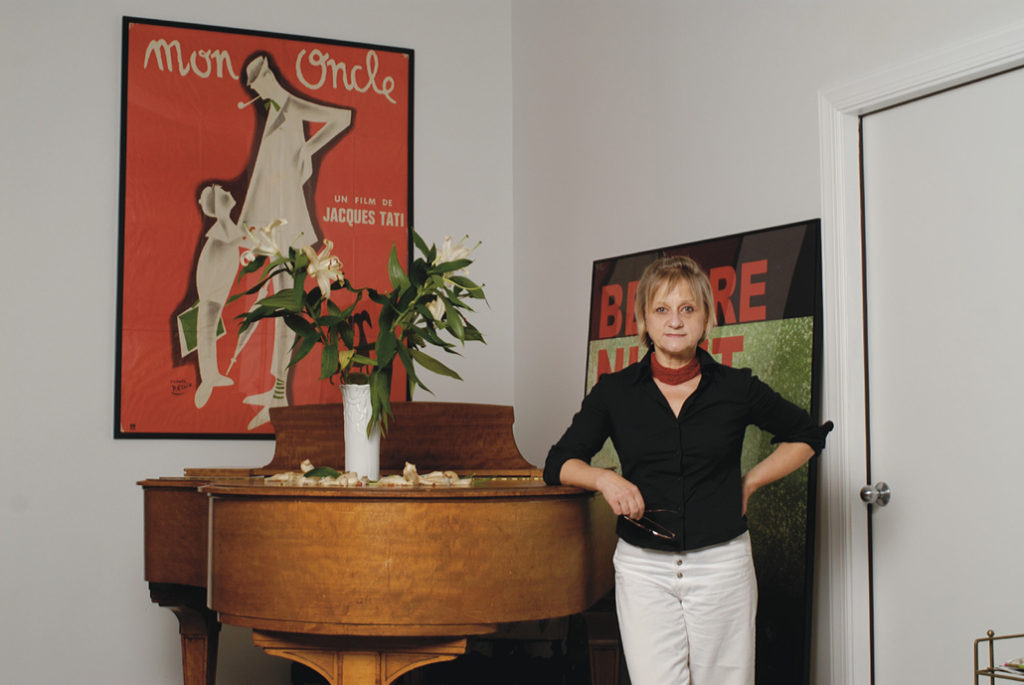
At the same time that the temp dub is becoming more important, it is getting less and less time and resources devoted to it, Lowry feels. “Even if we didn’t have previews, I think films would benefit from the temp process because it’s like workshopping,” she says. “It’s a way for a team of people to get to know the film and each other and figure out what would best serve the end product.”
Job Stability?
Given all these factors, could the job of the music editor actually be in jeopardy? “The job itself? No,” responds Rubin. “But then again, I think of myself as a film’s music editor, not a composer’s. I believe a film needs a great music editor, and as long as there is a need to preview a film with music, the music editor will play a prominent role, especially the good ones.”
“Everyone is so worried that technology is going to eliminate jobs,” says Dittrick. “But Hollywood is so diversified, unlike in Europe, for example, where the sound editor does the music editor’s job. That could never happen here, because people do their jobs the way they are trained to; they are focused on one craft.
“And at least on TV shows, there’s no way for a picture editor to do what we do––spot, time, prep source, load score and supervise a two-day mix,” Dittrick continues. “When we leave the spotting session, we’re off to time the show for the composer who has usually moved on to the next episode. Picture editors, with some exceptions, just don’t have the music background and experience to be on the dubbing stage, especially with their hectic schedules. Therefore, I believe that picture, sound and music editors will be in demand for many years to come.”
“I don’t think the position of music editor is going to completely go away anytime soon––but it is definitely morphing,” Lowry predicts. “Composers will always need someone to interface with editorial for them. It’s just a question of who does the work and how integrated they are into the post-production process as a whole.
“It will be a sad day if music ever ends up being treated as a separate stand-alone compartment of filmmaking instead of something that is inextricably woven into the fabric of the artwork,” she concludes.
To put it another way, “Music in a film is like making a risotto,” explains Badami, himself of Sicilian descent. “Until you mix in the Parmesan, it’s not risotto.”



